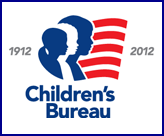Printer-Friendly version of article
Newsletter Highlights Trauma and Refugee Families
A recent issue of the The Dialogue, published by the Substance Abuse and Mental Health Services Administration (SAMHSA), focuses on trauma in different populations and ways to identify and address trauma.
In the article "Adapting Trauma Interventions for Refugee Families," the authors argue that refugee children impacted by trauma from their experience of war or immigration often continue to suffer as refugees because of the effect of the trauma on parenting practices. Stressed parents in a new country may exhibit impaired parenting that has long-lasting effects on their children's experiences and behaviors.
The article highlights a modification of the Parenting Through Change program with Somali and Oromo mothers in Minneapolis and St. Paul, MN. The 14-week Parent Management Training-Oregon Model (PMTO) program was culturally adapted to incorporate a trauma-informed focus. Because traumatic stress had disrupted parenting, particularly parent-child communication in times of conflict, one of the most important trauma-adapted aspects of the work was teaching emotion-regulation skills. The pilot program was well received, and the group saw an 85 percent retention rate. The article also presents a list of guidelines for working with refugee populations, particularly those refugees with prior exposure to trauma.
The issue's special feature article, "Vicarious Trauma," by Nora Baladerian, explores the experiences of those who work with trauma victims and disaster survivors. The author defines vicarious trauma as more than just the impact of seeing or hearing the aftermath of trauma; rather, it is a standard risk for anyone working with victims, survivors, or witnesses of trauma. The author asserts that proactively addressing vicarious trauma is essential for preventing mental health disorders or other negative outcomes. Workers often possess strategies to reduce the risk of secondary trauma but rarely take the time to implement those strategies. Behavioral health stigma also is a leading barrier to the prevention of trauma transfer. Simple strategies such as regular breaks during the workday and open discussion during staff meetings can help reduce cumulative stress. The article presents a list of the symptoms of vicarious trauma and tips for intervention.
This issue of The Dialogue includes the article "Formation of Long-term Recovery Groups," contributed by Jean Peercy, information on the tool When Families Grieve, a resource for helping adults and children cope with the death of a loved one, and more.
The entire issue of The Dialogue is available on SAMHSA's website:
http://www.samhsa.gov/dtac/dialogue/
Related Item
The National Child Traumatic Stress Network (NCTSN) has published Secondary Traumatic Stress: A Fact Sheet for Child-Serving Professionals. The six-page factsheet explores the different ways individuals experience vicarious trauma, identifies specific signs and symptoms, and provides strategies for prevention and intervention. Additionally, the factsheet delineates the essential elements for a trauma-informed system that caters to the needs of workers who experience secondary trauma.
The factsheet is available on NCTSN's website:
http://www.nctsn.org/sites/default/files/assets/pdfs/secondary_traumatic_tress.pdf (724 KB)
<—Previous Section
<—Previous Article
Next Section—>



